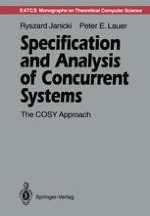Concurrent systems abound in human experience but their fully adequate conceptualization as yet eludes our most able thinkers. The COSY (ConcurrentSystem) notation and theory was developed in the last decade as one of a number of mathematical approaches for conceptualizing and analyzing concurrent and reactive systems. The COSY approach extends theconventional notions of grammar and automaton from formal language and automata theory to collections of "synchronized" grammars and automata, permitting system specification and analysis of "true" concurrency without reduction to non-determinism. COSY theory is developed to a great level of detail and constitutes the first uniform and self-contained presentationof all results about COSY published in the past, as well as including many new results. COSY theory is used to analyze a sufficient number of typical problems involving concurrency, synchronization and scheduling, to allow the reader to apply the techniques presented tosimilar problems. The COSY model is also related to many alternative models of concurrency, particularly Petri Nets, Communicating Sequential Processes and the Calculus of Communicating Systems.
